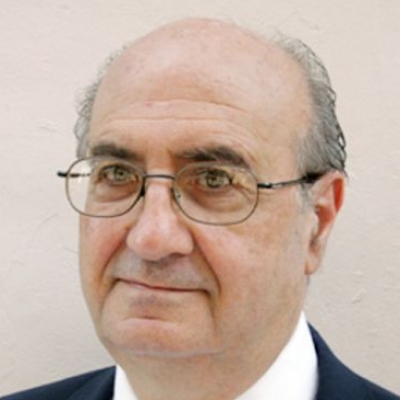Health Care: Healing the Middle East
How are medical professionals promoting peace in a region of conflict?
June 15, 2009
Talks between President Barak Obama and Israel's Prime Minister Benjamin Netanyahu on May 18 have underscored the importance of Middle Eastern peace efforts, at all levels.
Looking beyond the lofty heights of leadership discussions to actions on the ground, health activities have proven to be a useful bridge between Israelis and Palestinians.
Since its founding in 1988, the Association of Israeli-Palestinian Physicians for Human Rights has brought together Israeli and Palestinian health professionals. Following the signing of the Oslo agreement in 1993, a new set of players — aside from NGOs and human rights groups — came into action between 1993 and 1997, focusing their activities on developing and providing health services to the Palestinian people.
In 1995, following an invitation of the late King Hussein of Jordan to officials at the Canada International Scientific Exchange Program (CISEPO), several actions were carried out to foster collaboration between Arab and Israeli doctors.
For instance, the high incidence of hearing loss shared by Jordanians and Israelis was the basis of a project to provide auditory tests and improve hearing among infants.
To date, more than 145,000 infants have been screened and treated for hearing loss and in those affected and treated their hearing has considerably improved. In addition, the program has expanded to youth health promotion, maternal nutrition and management of infectious diseases.
Under the leadership of Dr. Mary-Claire King, who identified the first breast-cancer gene, scientists from Tel Aviv, Bethlehem and Seattle teamed up to find the cause of deafness, and have found several genes responsible for hearing loss.
They were able to do that despite the obstacles posed by the frequent shutting down of university facilities, blocked shipments and other practical inconveniences.
Joint Israeli-Palestinian publications have also been created. In December of 2004, the first issue of the magazine Bridges was launched under the auspices of the World Health Organization (WHO). The magazine has contributions from both Israeli and Palestinian health experts, and is another example of the value of building bridges of understanding between Israelis and Palestinians.
A recent report by Susan J. Blumenthal and Stephanie Safdi entitled "Peace Through Health" found that ongoing health projects in the region have contributed to the development of a cooperative network of Palestinian and Israeli health experts.
The Palestine/Israel Health Initiative is a central component of the Center for the Study of the Presidency's USAID-supported program titled "Advancing Trust and Reconciliation in Israel and Palestine."
"Because of the tense political climate, most health and medicine cooperative activities during the past several years have occurred on a relatively ad-hoc basis between individual professionals, hospitals and non-governmental organizations," the report states. Yet these kinds of programs have succeeded despite the inherent obstacles.
One of these programs, the Middle East Cancer Consortium, founded in 1996, has sponsored several cooperative projects on cancer and genetics research through a small grants program.
A personal view
Naomi Mark, is a 23-year-old Israeli woman who has been working with Physicians for Human Rights-Israel for the past three years.
She worked on behalf of Palestinian prisoners, and served as a liaison between the Israeli prison authority and the families of Palestinian prisoners. She also conveyed medical information on the status of Palestinian prisoners from their families to the doctors working inside the prison.
Naomi sees the current collaboration of Palestinian and Israelis in the health field as inherently political. "I believe that collaboration between two communities, especially in the field of health, should be based on solidarity and political awareness," she says.
"Collaboration should not work under the assumption that accepts the status quo. That is how most NGO’s in Israel work — helping but not trying to change. Humanitarian work and human rights work should always acknowledge the power relations and work to change the situation."
Healing Across the Divides is a U.S.-based charity that seeks to build peace by funding community-based health improvement projects for both Israelis and Palestinians.
Dr. Norbert Goldfield, Executive Director of the organization, acknowledges the difficulty of his mission. "It may at first seem unrealistic to speak about healing across the Israeli-Palestinian divide," he says. "We aim to contribute to peace building with a small "p" by encouraging groups of Americans to listen and learn from the conflict-related challenges faced in improving health."
Peace, after all, will not be achieved overnight — and incremental steps such as these will ultimately aid reconciliation between Israelis and Palestinians.
The better health of thousands of women, men and children is a vibrant testimony of the effectiveness of such approach.
In a region plagued by lack of confidence and trust, health could be the best antidote to war.
Takeaways
The magazine <i>Bridges</i>, launched under the auspices of the World Health Organization (WHO), has contributions from both Israeli and Palestinian health experts.
The high incidence of hearing loss shared by Jordanians and Israelis was the basis of a project to provide auditory tests and improve hearing among infants.
Naomi Mark, a 23-year-old Israeli woman, has served as a liaison between the Israeli prison authority and the families of Palestinian prisoners.
Read previous
An Islamic View of History
June 12, 2009
